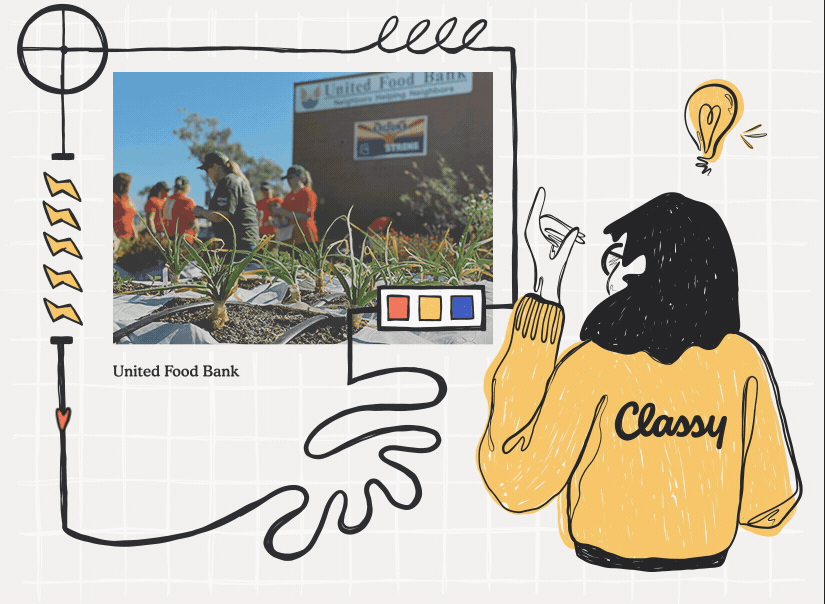How Nonprofits Find Resilience in Times of Economic Downturn

Request a Demo
Learn how top nonprofits use Classy to power their fundraising.
When the economy fluctuates, it’s more important than ever to have a reliable set of tools and processes that maximizes a nonprofit’s impact.
This year, inflation has hit a 40-year high, and financial institutions like Bank of America predict a mild recession.
We know this is top of mind for many organizations, so we’ll discuss how leaders in the social sector can look to their existing fundraising programs and technology, alongside data from past recessions, to develop a sustainable long-term strategy.
A Look Back on the Nonprofit Outcomes During a Recession
By now, many investors, organizations, and individuals have already felt the impact of inflation. When you tune into the news and hear of the possibility of a recession, it’s natural to experience fear or concern as a first reaction. We’ll help you explore the reality that shows more optimism than you’d think.
Nonprofit Quarterly completed a thorough analysis of the Great Recession that helps us learn from the past. The findings include a measure of nonprofit stability before, during, and after the hardest-hit years of 2007, 2008, and 2009. While some nonprofits ultimately shut their doors, there were also several positive outcomes to share.
The Financial Impact of the Great Recession
Total social sector revenue saw a slight decline
Between 2007 and 2010, total revenue across charitable organizations outside of higher education and healthcare organizations declined by 1.6%.
The number of organizations that halted operations increased slightly
Between 2008 and 2010, the number of public charities (outside of higher education and healthcare organizations) that closed increased by 3.3% from the previous period (2005 to 2007).
Optimism for Nonprofit Resilience in Recession
Assets grew by 27.6% in higher education and healthcare organizations
Between 2007 and 2015, higher education, hospitals, and healthcare organizations grew assets by 27.6%, while all other nonprofits gained 12.3% in assets.
When we look deeper into these cause categories related to recent donation trends, we also see healthcare and education in the top three cause categories donated to in 2021.
Revenue increased by 6.3% for human services organizations
Between 2007 and 2010, human services organizations experienced an overall increase in revenue. Specifically, these nonprofits saw a 15% increase in donations.
Human services also remained the top cause category to donate to on Classy in 2021, in addition to healthcare and education.
4 Focus Areas for Resilience in Economic Fluctuation
When nonprofits plan for moments of economic fluctuation by establishing long-term goals and using their existing technologies to the fullest potential, they can continue to maximize their impact.
1. Define Desired Long-Term Outcomes
We know it’s second nature to think about your annual plans and budgets. We’re proposing a shift to seeing each year’s goals, tactics, and results as part of a larger 3 to 5-year strategy. On average, recessions since 1900 have lasted about 15 months. By shifting to a 3 to 5-year strategy, the recession is no longer a focal point, but part of the natural ups-and-downs of a long-term strategy.
Establish Long-Term Goals
Economic status aside, envision your ideal organizational outcomes five years from now. Write down where you want to be, what you want to achieve, and what you need to get there.
Just as important, make sure you communicate your long-term vision to your donor base to continue their investment in your organization, even if they need to reduce their monetary giving for the short term.
Work Toward Tangible Milestones
Identify smaller milestones to hit in the next one, two, and three years that are grounded in the ideal outcomes you’ve set for your organization.
Breaking out of the one-year focus can help you feel more confident in achieving the much larger goals at play. As each year’s plan unfolds, your clear path to earning more will develop. Focus on the most thoughtful short-term decisions you can make today to bring your larger goals to light.
2. Establish Your Sound Technology Foundation
The tools your team uses determine what they achieve every hour of the day. Using your technology to the fullest shapes your ability to connect with and convert the right people in this year’s campaigns. You can then sustain your revenue to achieve your long-term outcomes.
This is the time to feel confident that your fundraising tools are powerful, flexible, and secure. If you already have software, use it to its fullest potential. If you don’t, consider the best solution to invest in now to benefit your organization for the long term.
That means looking at key factors such as:
- Extensive payment options
- Recurring management capabilities
- Flexible campaign design and branding to tell your story authentically
- A secure platform that protects data and offers a reliable infrastructure
Build the Trust That Retains Supporters
When people need to lessen their contributions due to economic strains, they will likely prioritize relationships with organizations they trust. Outside of meaningful communication, secure and seamless donation experiences are huge factors in building that trust.
Trust, security, and stability can support donor conversion, retention, and engagement rates. These outcomes will be significant as you focus on the donors who are prepared to continue giving and potentially increase their contributions.
3. Recall Tactics That Led to Results During the Pandemic
The financial uncertainty triggered by the COVID-19 pandemic is a good point of reference to evaluate what donor behavior looks like when the economy shifts.
Many nonprofits exercised resilience during the pandemic in the face of new restrictions on in-person fundraising. At a time when many Americans tightened their wallets for fear of layoffs, rising prices, and an unknown trajectory for the economy, the social sector worked together to adapt to uncertainty. Those learnings will serve the industry as we approach our next wave of economic challenges.
Take a look back at which fundraising approaches your donors responded well to, and what you might want to shy away from.
Gather your teams to discuss planned vs. expected results such as:
- Did a virtual event that you hosted during the pandemic result in an unexpected flow of donations?
- Did peer-to-peer opportunities result in higher fundraising participation among your donors?
- Did you leverage social media to engage with donors online and unlock a channel that now fuels new donor acquisition?
- Which campaigns resulted in the highest average donation amount, despite the number of individual donors who contributed?
Look at what worked well and be honest about what didn’t to focus time, resources, and budget on proven strategies.
4. Thoughtfully Allocate Resources to Long-Term Growth
With your long-term strategy and technology, you’re in the best position to maximize efficiency.
The key is to invest time now in a way that helps your future self. That comes with optimizing your team’s current tools while also reducing spending on activities that don’t ladder up to your long-term growth. Take the opportunity to reallocate time and budget to fundraising tactics that will outlast an economic downturn.
For example, you can use automation, deep data analytics, and innovative functionality within the technology you already have. These tools help you free the space and time your team needs to focus on strategy and planning that allows you to achieve more.
Get more out of your day-to-day operations and your team’s potential output with the modern automation technology provides to you. You can automate tasks to see more value from each staff member’s working hours, which we’ll review below.
Ideas to build efficiency with your technology
- Save time with campaign templating for initiatives you repeat often
- Pre-establish email and social media templates for frequent communications
- Create automated emails to keep donors informed, prompt them to give, and thank them when they do
- Integrate your fundraising tools to reduce manual data entry and keep metrics that inform performance and decision-making consistent
Find Direction in What You Can Control
While it’s easy to get overwhelmed by the latest news headlines, remember you have control over your future. These four focus areas are just a few examples of where you can turn concerned into confidence.
The nonprofit community is strong and resilient. Your visions and innovation are there. Now, it’s a matter of proactively reframing your long-term strategy to sustain any future situation we find ourselves in.

Let Data Inform Your Long-Term Fundraising Strategy
Subscribe to the Classy Blog
Get the latest fundraising tips, trends, and ideas in your inbox.
Thank you for subscribing
You signed up for emails from Classy
Request a Demo
Learn how top nonprofits use Classy to power their fundraising.
 Explore Classy.org
Explore Classy.org 

